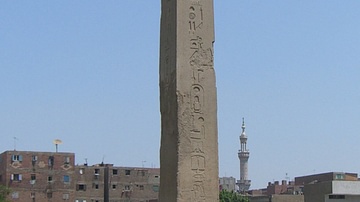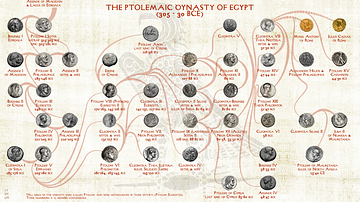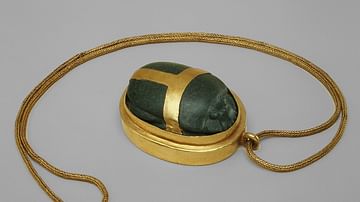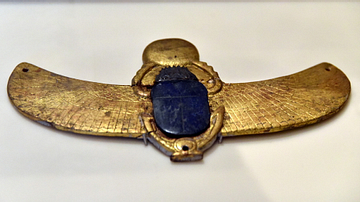Illustration
This is one of the largest representations of scarab beetles to survive. It also ranks among the last great statues of any pharaonic deity. The scarab represented Khepri, the form assumed by the sun-god at dawn. The Egyptians noticed that scarabs hatch from buried dung-balls as if by self-creation. The sun-god was also believed to be self-creating, renewing his powers each night, before his rebirth at daybreak. Each sunrise was a repetition of god's first appearance at the dawn of time as the creator god Amun. The statue is made of quartz diorite, a stone not normally used for Egyptian sculpture. Three ancient quarries have been identified, deep in the Eastern Desert. Their exploitation is archeologically confirmed for the Roman Period, but the subject and workmanship of this piece suggest that it was made a bit earlier, under the Ptolemies. Most likely, the scarab was originally set up in the temple of Atum at Heliopolis. In Roman times, it was moved, probably 1st to Alexandra and later to Constantinople (modern-day Istanbul, Turkey). Ptolemaic Period, 3rd or 2nd centuries BCE. From Istanbul, Turkey; probably from Heliopolis, temple of Atum, Egypt. (The British Museum, London).
About the Author
Cite This Work
APA Style
Amin, O. S. M. (2016, July 18). Colossal Scarab. World History Encyclopedia. Retrieved from https://www.worldhistory.org/image/5363/colossal-scarab/
Chicago Style
Amin, Osama Shukir Muhammed. "Colossal Scarab." World History Encyclopedia. Last modified July 18, 2016. https://www.worldhistory.org/image/5363/colossal-scarab/.
MLA Style
Amin, Osama Shukir Muhammed. "Colossal Scarab." World History Encyclopedia. World History Encyclopedia, 18 Jul 2016, https://www.worldhistory.org/image/5363/colossal-scarab/. Web. 17 Apr 2025.








